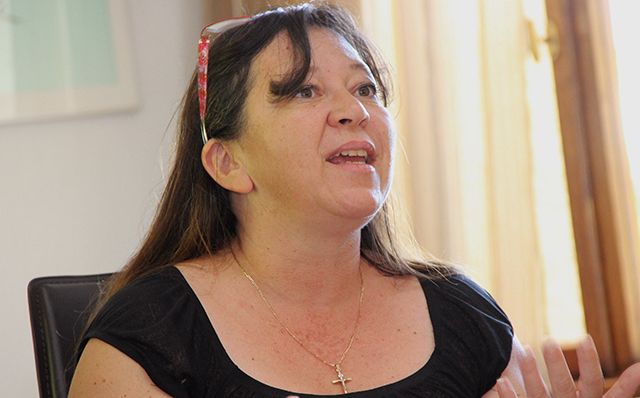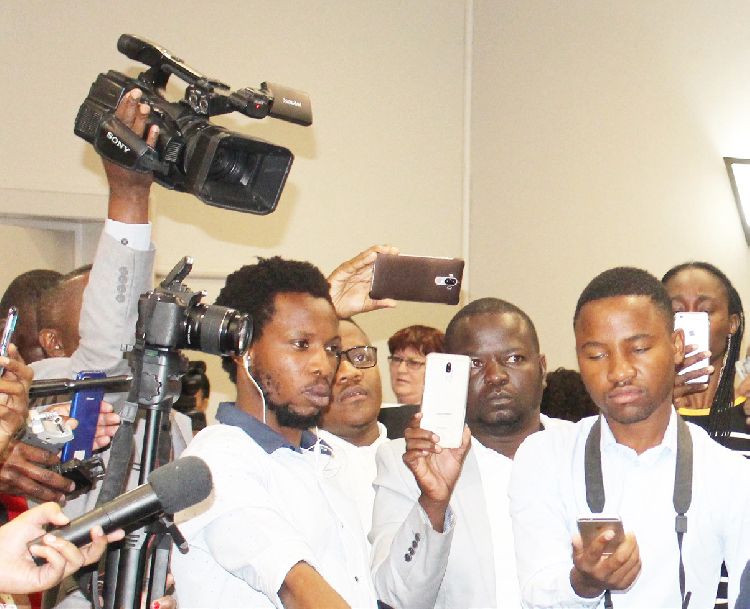ON 4 MAY 1978 when a Namibian camp was attacked by South African soldiers in the Angolan town of Cassinga, Tunga-eumbo Mboti was two weeks away from celebrating her 11th birthday.
More than 600 Namibians, mostly women and children, were killed on that day. Hundreds more were injured. Tunga was one of the injured. As Namibians commemorate the Cassinga massacre this Sunday, Tunga recounts how the events unfolded.
They stayed in Number 2 Temporary Camp. Tunga remembers waking up and preparing for school, which was in the nearby main camp. It was an ordinary Thursday.
When they reached the main camp, like the rest of the inhabitants, they gathered at a big open area that resembled a soccer field, where a parade was held every morning. The parade was more like an assembly where people gathered for assignments. On that day, more than 500 people were ready and usually children lined up first.
When they approached the parade, they first saw two soundless warplanes approaching the northern side of the parade. Then two more emerged heading for the parade area, where they released teargas until a thick cloud of smoke enveloped the area.
“I’m sure the teargas was a deliberate ploy to confuse and make us inhale it so we won’t be able to run away,” Tunga says.
Then the bombs came, followed by gunshots. Realising that this was an attack, camp managers instructed everyone to run into hiding, especially to the riverside.
“We are under attack! Run!” she remembers the announcement, adding that she tried to run but had no balance to stay on her feet.
“I kept falling. A friend of mine then pointed out to me that I had been shot and told me to sit down and wait for the paramedics. When I finally looked down at my legs, that’s when I realised I had been shot in the left leg just when the announcement was made,” she says.
Tunga recalls that the camp was a mesh of different sounds and then screams, gunshots and bombs.
“Everyone was confused and terrified. My friend left me and continued running. Luckily for her, she was not injured. I could not feel my toes because my broken leg was dangling from the thigh. Realising there was nothing I could do, I just sat there crying and looking at people running. Some had fallen dead around me, while others wounded just like me sat, helplessly.
“I heard some people shouting that the planes had landed and that the paratroopers were running on foot, coming toward us, possibly to kill and finish us off. I got up and hopped on my right leg to the nearby bushes next to the clinic where I hid,” she says.
From there, Tunga says, she had a full view of what was happening at the parade area.
“As I sat holding my leg and witnessing the brutality that was being unleashed on my friends, brothers, sisters, comrades and fellow Namibians, two nurses who were helping the wounded spotted me and came to my aid. They managed to stop my bleeding and bandaged me,” she says.
Near her were two women. One had been shot in the stomach and was holding her intestines intact.
“I can’t tell whether she made it or not,” she says.
After attending to her, the nurses told her to stay behind the bushes and rushed away to attend to other wounded people.
She stayed there until the whole ordeal ended.
Around the afternoon, four South African soldiers on foot came bayoneting anyone who had been wounded.
“By God’s grace, they never touched me. It was like a miracle. They just looked at me and smiled, probably thinking that I would not make it anyway. Two of them were smoking and the other two pointed their guns at me. I looked back at them in agony,” she says.
Years later, while reading a book on Cassinga by Annemarie Heywood, Tunga learned the attackers were ordered not to spare any survivor.
Heywood quotes one attacker telling his story: “I was given an AK-47 and instructed to kill those who couldn’t be saved. I had to decide who was not going to live.
“We found this woman clutching her screaming baby. It was only when we tore the child away, that we saw the terrible wounds inflicted by an air force bomb. There was no hope for her. I had to shoot her. She looked at me. I can never describe what it did to me. It was too much. I later broke down,” the soldier says.
They walked around the camp, demanding to know where Plan Commander Dimo Hamaambo was. They called other names too, I can only remember that of Dimo and the insults in Afrikaans.
A while later, Tunga says she saw another group of white soldiers, whom she identified as Cubans.
“I realised they were accompanied by some of our comrades. Tate Jarius Mborondondo was one of them. I realised then that they had come to help us,” she says.
“We were thrown in there, right on top of each other. I was in unbearable pain because some of the people were thrown right on top of my wounded leg. I cried for help but nobody responded. I thank Tate Mborondondo because he saved me,” she says.
It had been a long brutal day and the people in the truck were quiet, each consumed by their own pain.
As they drove to the Cubans’ camp in a nearby town called Tetchamutete, they realised the South African soldiers had planted landmines on the road before attacking Cassinga. They had to drive in the wild where it was uncomfortable for them.
Stay informed with The Namibian – your source for credible journalism. Get in-depth reporting and opinions for
only N$85 a month. Invest in journalism, invest in democracy –
Subscribe Now!






